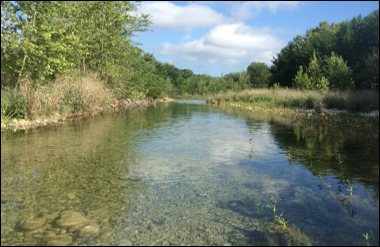Beta version of stream flow classification tool developed for Great Plains region

SCCWRP and its partners have completed development of the beta version of a tool that can rapidly distinguish among perennial, intermittent and ephemeral streams in the U.S. Great Plains region, paving the way for its initial rollout across a region that spans the Great Lakes to central Texas.
The flow duration classification tool – described in a user manual released scheduled to be released in the coming weeks – uses a combination of biological and geomorphic lines of evidence to classify streams based on the duration of their surface flows.
The Streamflow Duration Assessment Method (SDAM) tool is a collaboration of SCCWRP, the U.S. Environmental Protection Agency and the U.S. Army Corps of Engineers. SCCWRP previously developed versions of the SDAM for the Arid West and Western Mountains regions.
The SDAM tool is designed to support regulatory programs that require stream flow duration classifications, including a recent federal rule change that relies on stream flow duration to identify Waters of the United States. Ephemeral streams are water bodies that experience surface flows only after rain events, whereas intermittent streams experience sustained seasonal flows from snow melt and groundwater.
More news related to: Bioassessment, Ecohydrology